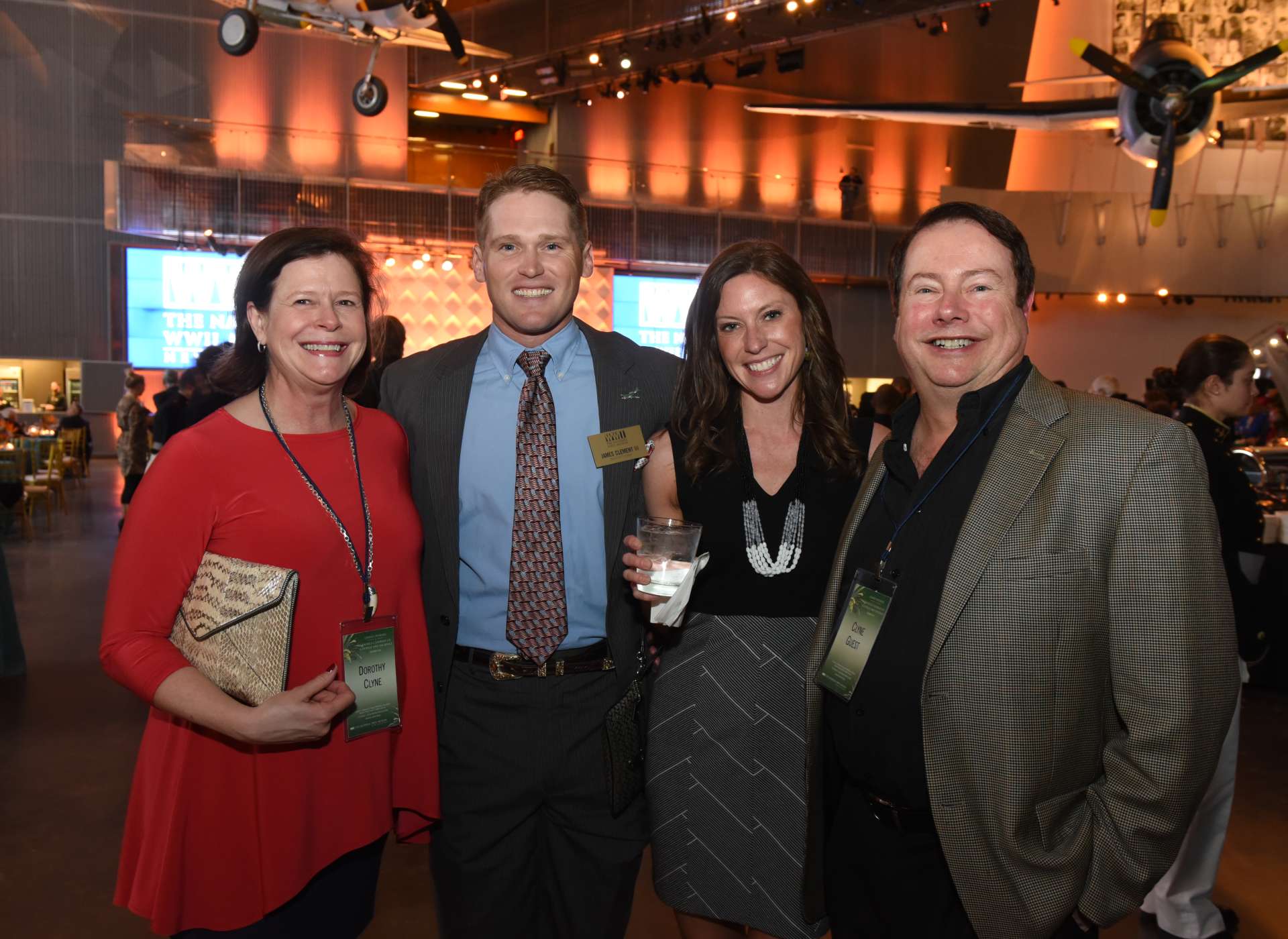
Complimentary planning resources are just a click away!
Every day, memories of World War II – its sights and sounds, its terrors and triumphs – disappear.
The National World War II Museum tells the story of the American Experience in the war that changed the world, so that all generations will understand the price of freedom and be inspired by what they learn. By partnering with The National World War II Museum, you can ensure that your children, grandchildren and loved ones will know the real stories of our heroes and fully appreciate their struggle and sacrifice.
Let us know!
Please let us know if you’ve included a gift for The National World War II Museum. Providing us with documentation is the best way to ensure that your gift is used in the way you intend.

Allen Dewitt in Memory of His WWII Veteran Parents: Alvin and Geraldine Dewitt
Alvin E. Dewitt served in the US Army during World War II and was assigned to Company B of the 143rd Infantry Regiment, 36th Infantry Division. Before Alvin joined his unit, its amphibious assault at Salerno, Italy, made it the first American combat division to land on the European continent. After bloody battles to take San Pietro and cross the Rapido River, the 36th led the breakout from Anzio and became the first Allied unit to pass through Rome.
Continue reading Alvin's story
Alvin became a new recruit when the 36th helped spearhead the invasion of Southern France and fought its way through the Siegfried Line into Germany and Austria. During this time, Alvin progressed rapidly from Private to Staff Sergeant. While fighting outside of Strasbourg, France, Alvin was injured and sent to Borden General Hospital in Chickasha, Oklahoma, where he met Geraldine Kearns.
Geraldine was the youngest daughter in a family of seven siblings from Syracuse, New York, who served their country during the war—her brother Jack in the US Army Air Forces, her brother James in the US Navy, her brother Ed in the US Army, her sisters Thelma and Dolores on the Home Front. Another sister, Ruth was married and supported her family as a homemaker. Geraldine joined the US Army after earning her nursing degree at Syracuse General Hospital School of Nursing and was stationed at Borden General, where Alvin was her patient.
While the war raged on and Alvin recuperated, he and Geraldine fell in love. They waited until the war ended before marrying in November 1945. Alvin was discharged in December 1945 and Geraldine in January 1946. During their 45-year marriage, they had two sons they named Allen and Raymond.
Allen Dewitt, a Charter Member of The National WWII Museum, says his father did not talk very much about the war. In honor of his parents, Allen has named the Museum a beneficiary in his will. His legacy gift will ensure Alvin and Geraldine are permanently listed in the Stephen E. Ambrose Legacy Society.

Thomas J. Billings
Thomas J. Billings knew the value of a dollar and the importance of education. As a boy growing up during the Great Depression with three older sisters, everyone in the family worked to help the family survive.
Continue reading Thomas' story
His father was a lawyer for an oil company, and before his parents started a family, his mother was a schoolteacher in east Texas. Billings was up at 4:00 a.m. each morning to deliver one hundred newspapers before 6:00 a.m. He vividly remembered the number of papers because he earned one penny for each delivery. Billings started at the University of Texas in 1941 before being drafted into World War II in 1943. He served as a bomber pilot in Europe and in New Guinea, flying over 35 missions.
Returning from the war, Billings used his GI Bill benefits and graduated from the University of Texas; he started his own company, Billings Oil Service, which expanded to Padre Drilling Company. He was a Charter Member at The National WWII Museum before leaving a part of his legacy with the Museum.

Cathy Cosenza
Cathy Cosenza of New Jersey made a promise to her mother, Catherine B. Cosenza, to always care for her father, Louis Anthony Cosenza—a fierce US Marine who served during World War II in the 8th Defense/Antiaircraft Artillery Battalion.
Continue reading Cathy's story
Corporal Cosenza of Paterson, New Jersey (later Ortley Beach, New Jersey), served in the Pacific and fought at Okinawa and Tarawa. In 1944 while on Okinawa, Cosenza, along with five other Marines, an Army sergeant, and an Army private, was in a shallow foxhole silently hiding in the cover of night. With nothing but God and his courage, Cosenza “ran like a jack rabbit and threw two grenades at the enemy.” It was this single action that saved all their lives and earned him the Silver Star.
Cathy remembers another story her father talked about often—his faith. During the war, Cosenza, along with Lieutenant Francis X. Golden, built a makeshift altar under the trees on Okinawa to allow their faith to carry them into battle. Cosenza believed the Masses he attended at this altar provided him protection as he walked into the dangers of war. Aged 93 when he passed away, he had never missed watching the 5:30 a.m. Sunday Mass on TV. It was the strength in hearing God’s word that carried him through each day’s challenges.
Cathy Cosenza is a member of the Stephen E. Ambrose Legacy Society for one reason: to honor the hero of her life—her dad, Louis Anthony Cosenza, a man of faith and her best friend.
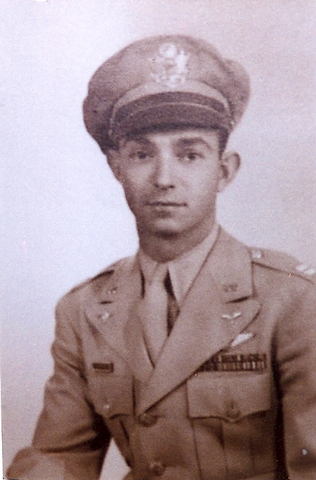
Thomas Ralph Johnson Jr.
Thomas Ralph Johnson Jr. was a pilot with the US Army Air Forces during World War II and the US Air Force during Korea and Vietnam. Serving in the European theater of World War II, he received credit for 35 missions as a member of the 407th Bombardment Squadron, 92nd Bombardment Group (Heavy) in the Boeing B-17.
Continue reading Thomas' story
Born in Missouri on October 30, 1921, Johnson finished Wellston High School and Missouri School of Mines before being inducted to the Army Air Forces on July 9, 1942, in Jefferson Barracks, Missouri. He became a commissioned officer on July 28, 1943, and following flight training, he reported to the 407th Bomb Squadron on April 10, 1944.
The 407th was part of the 92nd Bomb Group known as “Fame’s Favored Few.” The 92nd was the first group of bomb squads to make the transatlantic flight nonstop from the United States to England, which was a great point of pride. Johnson’s WWII decorations and citations include the Distinguished Flying Cross, Air Medal with three Bronze Oak Leaves, American Campaign Medal, EAME Campaign Medal with four Bronze Stars, Army of Occupation Ribbon, and the WWII Victory Medal. His post-WWII medals and citations include the Vietnam Service Medal, National Defense Service Medal with one Bronze Star, Armed Forces Reserve Medal, Small Arms Expert Marksmanship Ribbon, Army Commendation Medal, Air Force Outstanding Unit Medal, and the Air Force Longevity Service Award Ribbon. Johnson retired permanently from the US Air Force in 1968 following 26 years of active and reserve duties. He married Dorothy Edna Pfarr in 1951 and was the father of Gale Kenneth Johnson and Byron Ralph Johnson.
Byron R. Johnson is ensuring the legacy of his father at The National WWII Museum as a member of the Stephen E. Ambrose Legacy Society. Although his dad spoke very little about his service to save democracy, Byron Johnson is in awe of all that he accomplished during the war. “This is not about me, but of the heroism of my father,” he says.

Sylvia Tuzy Rodriguez – Schwartz
Born in 1942, Sylvia Tauzy Rodriguez-Schwartz has always heard stories about relatives who served in World War II—including her brother, John A. Tauzy Jr., a US Navy Seabee; her father, John “Albert” Tauzy Sr., a Home Front worker; and her maternal uncles, Sylvain C. Bouché, a US Navy pilot, and Raymond V. Bouché, a US Army Air Corps navigator.
Continue reading Sylvia's story
Both uncles were declared missing in action during the war. Her fathers-in-law, Jose E. Rodriguez and Irvin E. Schwarz, also served with the US Merchant Marine and the US Navy, respectively. None of the men who survived the war talked about their service, except John, who would only say, “We did what we had to do.”
As a Seabee in the Pacific, one of John Tauzy Jr.’s jobs was keeping runways lit on Fiji and Peleliu so pilots could land safely. While volunteering in the Museum’s Curatorial department, Rodriguez-Schwartz found a letter from a pilot in the Pacific praising the Seabees for keeping the lights on so he could land safely on a darkened island. She sent her brother a copy to remind him of how special he was to the war effort.
As a lover of history and reading, Rodriguez-Schwartz found volunteering at the Museum a natural fit and has been with the Museum for over 10 years, along with her husband and cousin. During the COVID-19 pandemic, Rodriguez-Schwartz feared the Museum would close its doors, so she and her husband decided to become members of the Patriots Circle. Rodriguez-Schwartz included The National WWII Museum in her will because she believes strongly in its educational mission—to tell the story of the American experience in World War II so that future generations will know the price of freedom.

Glenn A. Mueller
Glenn Mueller is possibly the most frequent visitor to The National WWII Museum in New Orleans that lives outside of Louisiana. His 99th visit to the Museum occurred on Friday, November 3, 2023, for the Grand Opening of the Museum’s final permanent exhibit hall, Liberation Pavilion. Proudly seated in the front row, he witnessed the completion of the Museum’s Master Plan that was developed over 20 years ago.
Continue reading Glenn's story
Mueller is the owner, cofounder, & Chief Excellence Officer of RPM Pizza, the largest Domino’s franchise in North America. When not running his company or visiting the Museum, Mueller enjoys his love of history and trains at TrainTasticTM Model Railroad Museum in Gulfport, Mississippi, where he has built a model train station featuring—of course—The National WWII Museum.
Not only is Mueller a regular visitor to the Museum, but he is also a longtime member of the Patriots Circle, the Museum’s highest-level annual giving program. He joined the Stephen E. Ambrose Legacy Society by planning to leave an endowment gift ensuring the future of the Museum. Like Stephen E. Ambrose, the Museum’s founder, Mueller’s vision for his business has led to his great success, and he wishes to share a part of his legacy with the Museum.
By including the Museum in his estate plans, Mueller is ensuring that future generations will have the opportunity to visit the Museum, like he has, and learn about the American experience in World War II—why it was fought, how it was won, and what it means today so that future generations will know the price of freedom.
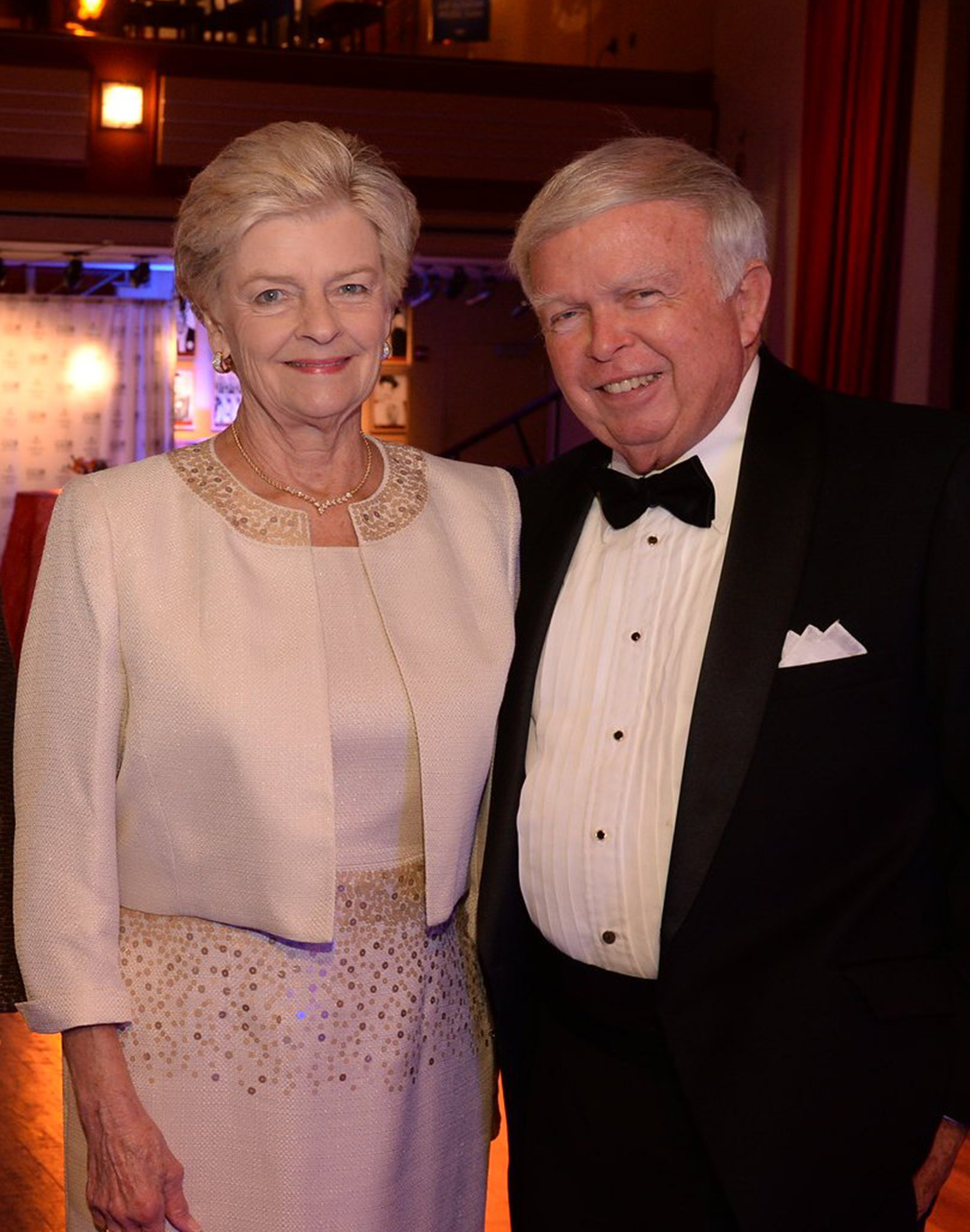
Paulette & Frank Stewart
The Stewarts have been dedicated supporters of the Museum since before its opening. Born and raised in New Orleans, Mr. Stewart saw early on the need for the city to have such an institution, dedicated to teaching “the price of peace and the consequence of war.” In addition to his gifts of financial support, Mr. Stewart has served as a member of the Museum’s Board of Trustees, and has…
Continue reading PAULETTE AND FRANK's story
generously supported ongoing exhibit planning Mr. Stewart was a young boy during World War II. He felt inspired to take action after the surprise Japanese attack at Pearl Harbor, and set about collecting foil, gum wrappers, cans of lard, and newspapers for the war effort. His mother made bandages as part of a wives group organized by the Red Cross on the Home Front. After the war, Mr. Stewart remained dedicated to public service and to the spirit of citizenship. He served in the US Navy on minesweepers patrolling the coasts of Florida and Cuba during the 1950s, and he was promoted to lieutenant junior grade at the age of 25.
Mr. Stewart first became involved with the Museum through a meeting with Stephen Ambrose and Nick Mueller in the 1990s. He was deeply impressed with their plan for a museum to honor WWII veterans and preserve their story for future generations. Mr. Stewart provided the capstone gift from the private sector, and The National D-Day Museum concept came to life.
With The National WWII Museum now celebrating its 15th year, the Stewarts still consider that capstone gift as one of their most gratifying accomplishments. Mr. Stewart reflects, “Life has given me everything. I have got to give back because of what life has given to me.” The lesson he most wants to share with others—through the Museum and its programs—is how America won the war after trailing badly in its defense preparation, and how citizens can succeed at anything through discipline, hard work, and volunteerism.
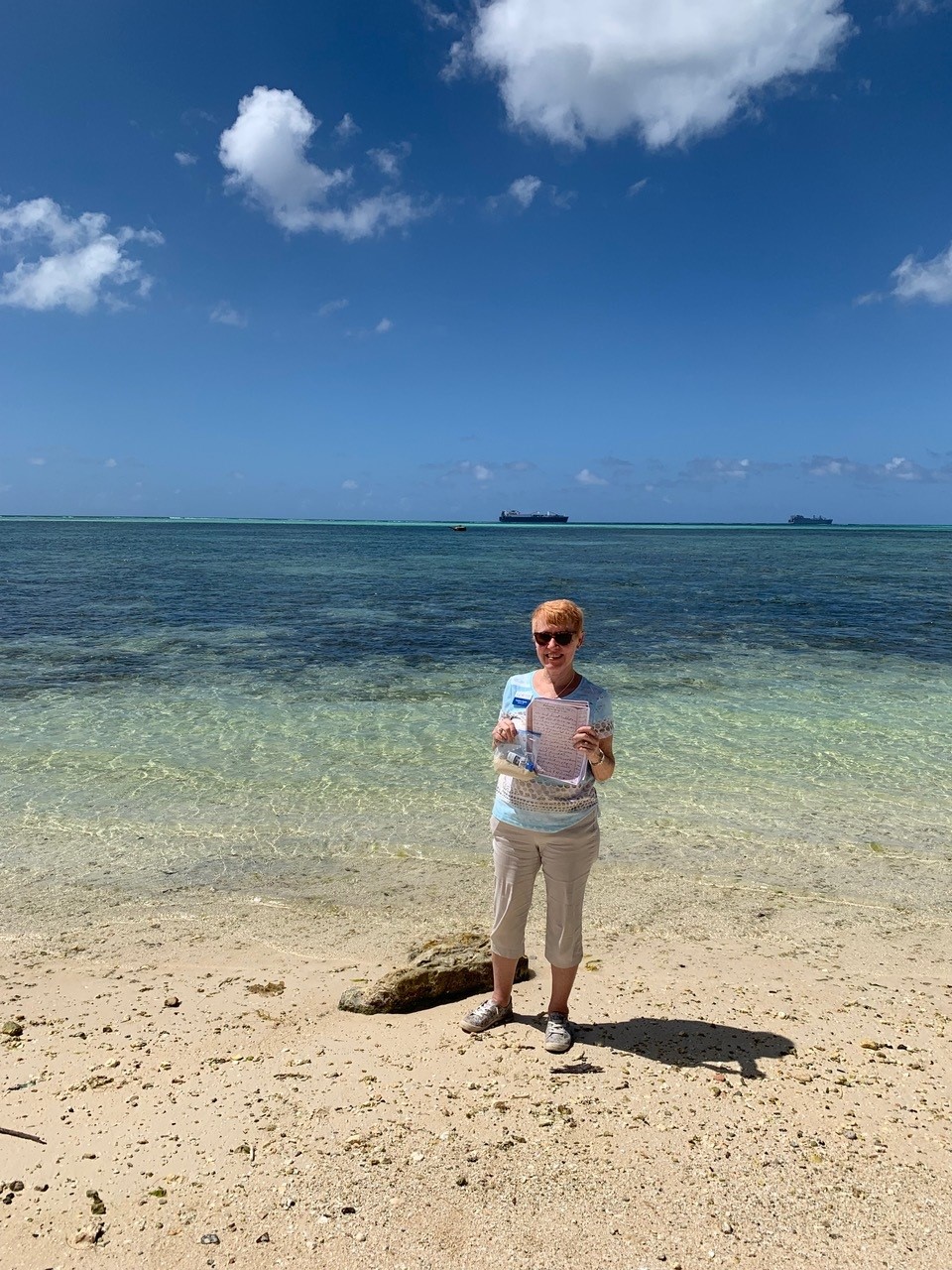
Candace Caylor
Continue reading Candice's story
…years, chronicling his wartime experiences from the day he was inducted to the day he found
out the war had ended.
“It was like a precious gift from my dad,” Candace says. “Reading that journal reawakened my interest in World War II. It gave me a glimpse into the realities of the war and what the soldiers went through. Reading about his experiences when landing on Saipan’s D-Day on June 15, 1944, brought me to tears.”
About 10 years ago, Candace, a retired nurse who lives in Milwaukee, Wisconsin, came across news articles about The National WWII Museum opening the Richard C. Adkerson & Freeport-McMoRan Foundation Road to Tokyo: Pacific Theater Galleries. Inspired by her father’s service, she joined the Museum as a Charter Member and traveled on the Museum’s 2019 tour of Pacific islands including Saipan and Tinian, two of the islands where her father fought, as well as Guam, Iwo Jima, and O‘ahu.
In addition to her support as a Museum Member, Candace recently joined the Stephen E. Ambrose Legacy Society, which recognizes special individuals and couples who have included The National WWII Museum in their estate plans, to ensure that her father will be remembered for future generations. These gifts support the Museum’s mission to preserve and share the history of the American experience during World War II.
“I believe that it is so vital to learn and understand US history, especially the wars we fought and why they were fought,” Candace says. “It is truly to preserve our freedoms. The National WWII Museum is an amazing place to learn about the battles on the Pacific and European fronts, and to hear from the people who fought those battles. It makes the war very real and ensures important history like this will not be forgotten.”
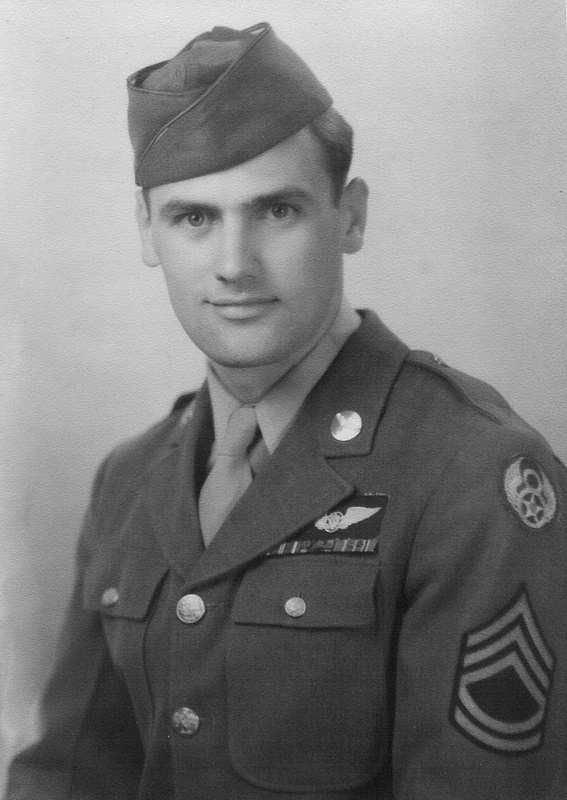
Dr. Mayme Kathy Volanty
The youngest member of his family, Blaine was drafted…
Continue reading Mayme's story
…into the Army Air Corps in 1943 and served as a B-17 Flight Engineer and top turret gunner. He flew 33 combat missions over Germany, France, and Belgium, as well as an early morning mission over France on D-Day.
He was awarded both the Air Medal and the Distinguished Flying Cross for his single acts of heroism while participating in aerial flight combat and operations.
Mayme is an enthusiastic champion of the Museum’s mission and is honored to preserve her father’s legacy through a planned gift. When asked what motivates her support, she explained, “The National
WWII Museum is doing important things, especially in educating youth and adults about the real World War II, not just what someone thought it was or believed it might have been. I could not think of a better place than the WWII Museum to invest my dad’s legacy in the future of our country. So, in my will, there will not only be his legacy but mine as well.”
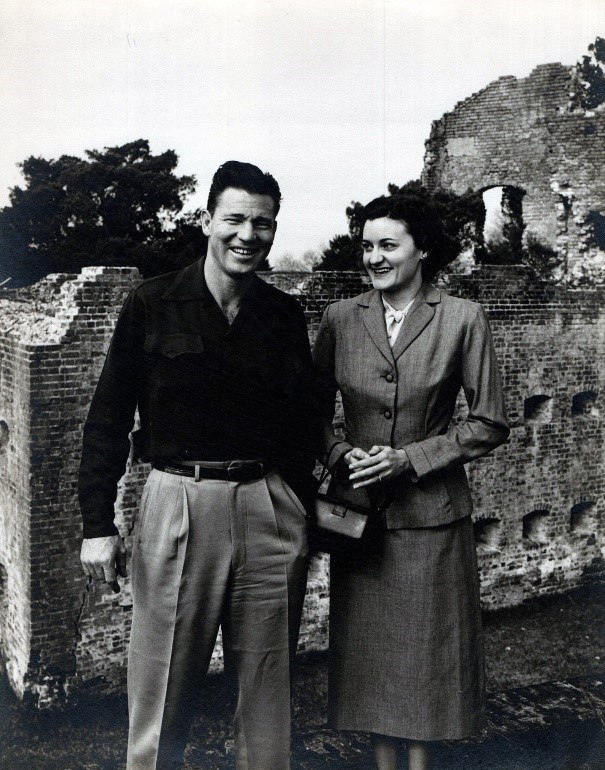
Jewell Watson Grima
A graduate of Holy Cross High School in New Orleans, Thomas Grima served in the US Army Air Forces during World War II and was shot down over France on his 24th bombing mission. He was rescued by the French Resistance and crossed the Pyrenees Mountains to safety into Spain. Because of his bravery and for being wounded during the war, he was awarded the Purple Heart—a…
Continue reading Jewel's story
…solemn distinction that denotes when a servicemember has greatly sacrificed themselves or paid the ultimate price while in
the line of duty.
When Thomas passed away in 2008, he left behind his wife of 60 years, Jewell Watson Grima, who ensured that a lasting memory of her husband would be kept alive through The National WWII Museum’s Stephen E. Ambrose Legacy Society.
A native of Denham Springs, Louisiana, and 72-year resident of Metairie, Louisiana, Jewell spent most of her work life in the oil and gas industry as a secretary while also serving as a talented artist and seamstress. Jewell passed away in 2020 at the age of 96. The National WWII Museum is grateful to her for including the institution in her estate plans and ensuring that her husband’s legacy of service—as well as hers—is remembered for years to come. Gifts like these from the Grima family support the Museum’s mission to preserve and share the history of the American experience during World War II.

Bob Hamrdla
Bob Hamrdla of Palo Alto, CA, is no stranger to World War II history. He is a retired Stanford Professor and an expert in German studies. In addition to teaching at Stanford for over 30 years, Bob has also led Stanford tours to Europe for the past 50 years, taking thousands of students and alumni on educational journeys. “I have always been a strong and convinced WWII buff and having lived in…
Continue reading bob's story
…Germany, I learned about different aspects of the War, visiting many, many sites that have figured in the battles. That ratcheted my interest to the high level I still retain. To me, World War II demonstrates that human beings can fight for ethical and beneficial causes, devoting energy, time, and money toward virtuous ends.”
Bob has been a supporter of The National WWII Museum for ten years. He first learned about the Museum in a newspaper article and was immediately intrigued. Shortly after discovering the Museum, Bob decided to make the trip to New Orleans to visit its exhibits firsthand. After his first visit, he quickly realized that he would be returning and decided to become an annual member through the Patriots Circle, thus beginning his lifelong relationship with the Museum. “I am and will be a member for life,” he exclaimed.
In 2013, Bob declared his intention to leave a legacy gift to the Museum. When asked what legacy means to him and why he decided to support the Museum in this way, Bob responded, “Legacy means something positive one leaves behind for the enrichment of others’ lives. For me, the Museum is a most meaningful and involved way through which I can help attract others to serve our country’s legacy.” Through his gift, Bob’s name is secured forever as a member of the Stephen E. Ambrose Legacy Society, an essential part of the foundation of this institution. Ambrose devoted his life’s work to preserving and honoring the stories of our service members. Through the Legacy Society, members have the opportunity to reflect those same values and support the Museum’s mission.

David Black
When it comes to generosity towards the Museum, David Wesley Ewell Black, a native resident of Atlanta, is a shining example. David is a retired Army Infantry Officer who spent 20 years in service. His late father, Ewell Conway Black Jr., was a Corporal in the US Army’s 106th Infantry Division during World War II. He fought in the Battle of the Bulge and was captured in December 1944…
Continue reading David's story
…spending six months as a prisoner of war before being liberated.
Giving to the Museum comes naturally for David. “History has always been a passion for me, especially American military history,” he says. “I have done extensive reading on the Battle of the Bulge, since that is where Dad fought and was captured, and came across the Museum in some of my readings about the D-Day invasion.”
David began donating to the Museum in 2004 because he recognized the importance of preserving history. “All history is important,” he continues. “Without understanding history, we cannot understand ourselves. Wars are terrible, and there is sadness and heartbreak on all levels. We need to understand why wars are fought and why people made the sacrifices they made to go to war. Without understanding these matters, we will not know how to prevent future wars.” In 2017, David decided to make a planned gift to the Museum.
Through his gift, his legacy is secured forever as a member of the Stephen E. Ambrose Legacy Society, an essential part of the institution’s foundation. Ambrose, the Museum’s Founder who passed away in 2002, devoted his life’s work to preserving and honoring the stories of our servicemembers. Through the Society, members have the opportunity to reflect those values and support the Museum’s mission, which is to educate younger generations on the lessons of World War II and to honor the men and women who sacrificed so much.
When asked what philanthropy means to him, David responds, “Well, it’s a big word that I’ve always associated with very wealthy people. I guess I am being philanthropic, but I don’t feel like it. I’m just doing my small part to help maintain the Museum and educate people on a part of American history when the country came together and sacrificed on a national scale to preserve freedom.” David’s commitment, and the dedication of other Society members, helps ensure that future generations are inspired by the Museum and the stories it holds. As you plan for your future, we invite you to join our mission so your legacy can play a significant part in continuing our educational initiatives.
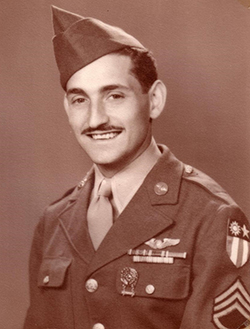
Jack Gross
Jack Gross started his conversation about his late father with one of his dad’s quotes “All of the medals on my jacket represent the tears of my wife and mother.” Herbert Gross, Jack’s father, served as an Army Air Force Staff Sergeant tail gunner and flight engineer. Gross fought in 30 missions during the war against the Japanese, all aboard B-24 heavy bombers…
Continue reading Jack's story
Jack Gross has the work ethic of his father, having spent his life as a geophysicist for various oil companies before his retirement. An article in the Staten Island Advance by Kiawana Rich stated and quoted Herbert Gross, Whatever he was asked to do during his service, “I did it my damnedest,” he said. “All my hands, my heart, my strength — all my being went into this war,” said Gross.
The most harrowing experience of Herbert Gross during WWII occurred on his 22nd combat mission with the 14th Air Force (the fabled Flying Tigers), 308th Bombardment Group, 375 Bombardment Squadron on May 20, 1944. He was aboard the B-24 named Hilo Hattie. During the firefight, anti-aircraft fire struck the turret Gross was manning, sending shrapnel through his legs, igniting hydraulic fluid and his pants, and causing 50-caliber bullets that crisscrossed beneath his feet to cook off. He parachuted out and dangled off a steep slope in French-Indo China (now Vietnam) for five hours before freeing himself and finding a village. Some days and several villages later, Gross and other crew members who were encountered along the way, eventually crossed over the border into China and found a Chinese general’s estate.
During his 10-day odyssey behind enemy lines, Gross came down with Dengue Fever, and suffered more than 100 infected flea, lice, leech and mosquito bites. This was in addition to the shrapnel wounds, burns, and a hematoma on his hip and buttocks from colliding with the jagged mountain on his parachute descent. After a month of treatment, Gross was cleared to return to active duty. He was honorably discharged on Oct. 30, 1945.
For his service, Gross received numerous service medals, including The Distinguished Flying Cross and The Purple Heart. He added that he never got a pension, “but I was never bitter. No one can say I did this for money. I did it from my heart.”
Jack Gross made a substantial contribution to further the educational mission of the National World War II Museum through a charitable gift annuity — a gift that pays him income for life. Jack is passionate about preserving the democratic ideals his father fought to preserve during WWII with a gift from his heart.

Herbert Gross at 95 years old

Michael Abrams
Few people understand the importance of the Stephen E. Ambrose Legacy Society as well as Michael Abrams. As a student of Professor Ambrose at Johns Hopkins University in the late 60’s, Michael saw firsthand the amazing spirit and impact of the man for whom the Legacy Society is named. That’s why being a part of this distinguished group has special meaning for him. Michael explains…
Continue reading Michael Abram's story
…his reasons for joining the Stephen E. Ambrose Legacy Society in his own words:
I can rightly say that the answer is mostly personal on several levels.
On an individual level, I served for nine years as an Air Force and Air National Guard Historian. In that capacity I helped preserve the heritage of the 90th Bombardment Group (Heavy) which fought under General Kenney in the Southwest Pacific theater during World War II. That unit deployed to Australia in October 1942, and participated in the campaigns around Guadalcanal, Rubal, New Guinea, and the Philippines. Working on one of the group’s reunions, I truly developed an appreciation for all they sacrificed and accomplished to preserve liberty and defeat the dark shadows of dictatorship and militarism. The Museum perfectly embodies telling this story on a much larger scale. In fact, the Boeing Pavilion includes several pictures of the 90th Bomb Group, which I immediately recognized when I visited the Museum in November 2019.
On a familial level, the Museum tells the story of my family. Both my mother, a nurse, and father served in the Navy during the war. Dad participated as a Navy doctor in both the battle of the Atlantic in 1942 and later in the South Pacific from 1943 to 1945. In addition, all my uncles served in uniform in the Navy, Army, and Army Air Forces. Being born in 1947, I can still recall them talking on the porch about what they did and where they went. I want to help preserve the recollections of all those like them.
On an academic level, I particularly wanted to make this donation. Professor Ambrose served as my academic advisor in the History Department at Johns Hopkins University while I attended undergraduate school. In addition, he taught a course entitled “War in the Modern World,” which was the best class I attended in nine years of undergraduate and graduate schools. Professor Ambrose was a master storyteller in the classroom and a true lover of the American GI.
I recall Dr. Ambrose telling a story about the Russian defense of Moscow in 1941. At the end of the lecture, he recited the words of Stalin: “Moscow is saved, General Winter has arrived, and the politburo looked out the window and saw that it was snowing.” The entire lecture hall of 100 students literally stood and cheered. I have never seen that before or since. My contribution serves to commemorate such a wonderful teacher.
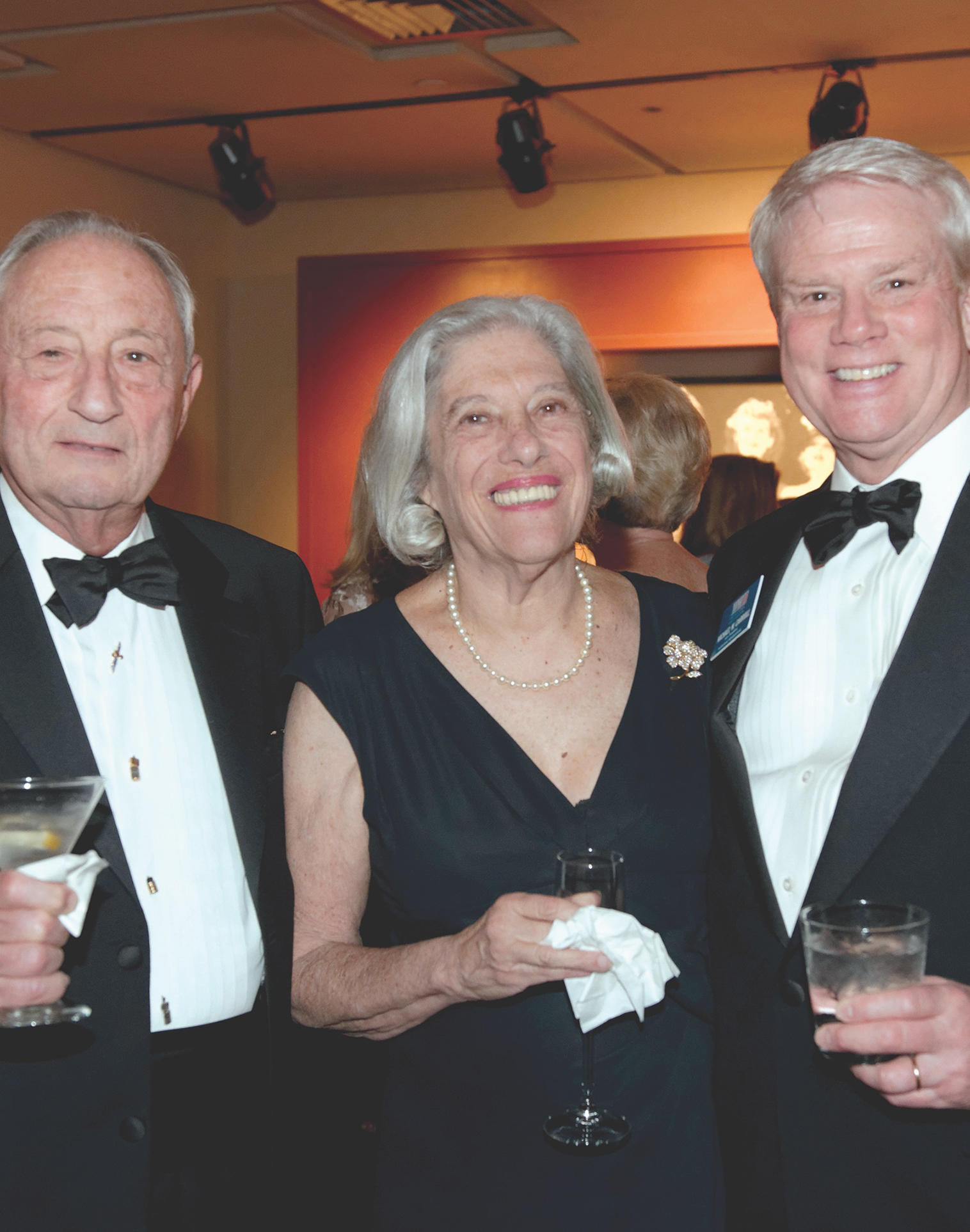
Robert and Lenore Briskman
Planned Giving Supporters Robert and Lenore Briskman first visited the Museum in January 2013 for the grand opening ceremonies of the US Freedom Pavilion: The Boeing Center. The two enjoyed their first visit and have returned many times. Their favorite visit came in June 2015, when Rob brought a large group of Princeton classmates to tour the Museum and learn about…
Continue reading Robert and Lenore's story
…Princeton’s role in the war. They were “very impressed,” he said, and was thrilled to share this information with his friends and family.
The Briskmans are committed to expanding the Museum’s education mission so that younger generations can learn about the importance of the war, and have made steps to include the Museum in their future Planned Giving initiatives.
“It is very important to look at the future,” Rob said. “A decade from now all WWII veterans will be deceased, so the Museum must do what it can to enhance its educational activities.” He said that the variety of Planned Giving options at the Museum offer many ways to give and help strengthen the Museum’s Endowment Fund for this very purpose.
It is important for visitors to “know the whole story of World War II, not just the battles, but the things that affected civil society,” Rob said. “It was a tremendous change of our culture, society and industry. All of this needs to be told.” Added Lenore, “This was the most popular war, and probably the most important war in recent years. . . . It would be a pity for people to lose track that this particular event could have changed the world in a disastrous way.”
The National WWII Museum is thankful for the leadership and generosity of Robert and Lenore Briskman, and honored to highlight their generous Planned Giving support.
Complimentary Gift Planning Resources Are Just A Click Away!
Need assistance? We're here to help!
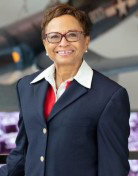
Shelita G. Bourgeois, M.S.
Planned Giving Officer
The National WWII Museum
945 Magazine Street, New Orleans, LA 70130
504.528.1944, ext. 247
shelita.bourgeois@nationalww2museum.org
